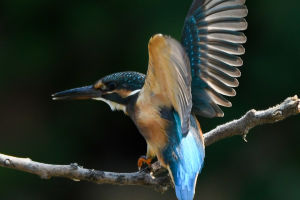In the realm of wildlife, the leopard stands out as a captivating and enigmatic creature.
Its speed, power, and beauty leave us in awe.
Yet, beyond these apparent traits, leopards harbor many surprising facts. This article aims to shed light on ten remarkable aspects of leopards, inviting us to delve into the realm of these mysterious and majestic cats together.
1. Leopards: Among the Big Five Cats of Asia and Africa
Leopards inhabit diverse African and Asian ecosystems, including grasslands, forests, mountains, and deserts. Their adaptability enables them to thrive in various environments, making them one of the five largest cats on these continents.
2. Masters of Arboreal Agility
Among the four significant cats, leopards excel at climbing trees. They frequently utilize trees as vantage points to surveil prey or seek refuge from predators, showcasing their remarkable climbing prowess.
3. Unparalleled Jumping Prowess
Powered by robust hind leg muscles, leopards are exceptional jumpers. With astonishing agility, they can effortlessly leap distances exceeding 6 meters and scale walls towering over 2 meters in height.
4. Variability in Weight and Coloration
African leopards generally surpass their Asian counterparts in size, boasting more vibrant fur colors. This divergence is attributed to the greater ecological diversity of African habitats, necessitating larger body sizes and brighter hues for camouflage and adaptation.
5. Versatile Predators: From Antelopes to Monkeys
Leopards exhibit remarkable dietary flexibility, preying on various animals, including antelopes, monkeys, and even rodents. Snow leopards favor sheep and goats, while Arabian leopards in desert environments rely on antelopes, hares, birds, and lizards for sustenance.
6. Keen Senses: Eyesight and Hearing
Blessed with acute vision and hearing, leopards can detect prey even in low-light conditions. Their visual acuity surpasses that of humans, enabling them to discern moving objects from considerable distances.
7. Grace Amidst Strength
Despite their muscular physique, leopards move with remarkable gracefulness. Their silent, stealthy gait allows them to traverse terrain with minimal disturbance, earning them the title of silent assassins in the animal kingdom.
8. Solitary Stalkers
Leopards are solitary creatures, preferring solitary journeys except during mating season or when mothers tend to their cubs. They maintain large territories and avoid territorial overlap with other leopards.
9. Communication Methods
Communication among leopards primarily involves rough, noisy vocalizations akin to other big cats.
However, leopards also employ unique calling methods to distinguish their voices and maintain contact with companions over vast distances. Their repertoire includes roaring, growling, purring, and even a distinctive harsh cough.
10. Mating: A Temporary Union
Mating is the sole reason for leopards to abandon their solitary lifestyle temporarily. Female leopards typically begin mating at around two to three years of age, coming together with their male counterparts only during the mating season. The mating phase ensues once a suitable mate is found, typically lasting about five days.
Leopards stand as one of the most magnificent and enigmatic felines on Earth. By unraveling these fascinating insights, we can deepen our appreciation for these remarkable creatures and strive to ensure their continued preservation.
Let us unite to safeguard leopards and their wondrous habitats for generations to come.


